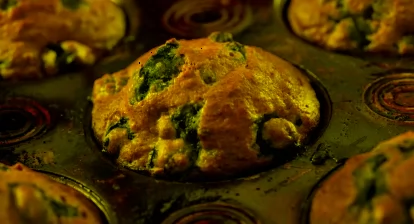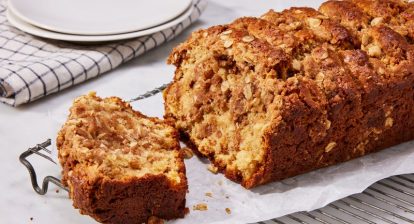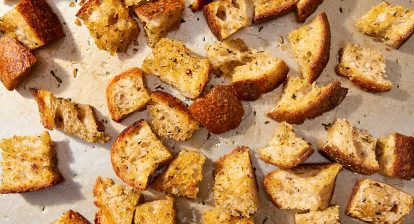A few months ago I wrote about the 6 biggest challenges in sourdough baking can be faced by a beginner. You know, sour bricks, moldy starters, etc. In this post I would like to take it a step further by explaining how you can go into sourdough baking fearless, well informed and prepared for all the challenges you may face.
JW Goethe once said: “Everything is difficult before it is easy.” Well, it doesn't have to be that way.
To do? Let's dig into 7 simple yet essential keys to successful sourdough baking.

1. Get the sourdough starter working before you start baking the sourdough.
Before mixing a starter into the batter for the first time, make sure it is active, bubbly and firm. If your starter doesn't rise after every feed, neither will the bread you mixed your engine with.
Two important factors affect the activation of the starter at first: the type of flour and the temperature. Whole grain flours ferment faster and the starter grows faster at higher temperatures (optimal temperature at the beginning of starter setting is 25-27°C/77-80°F). My favorite flour for making sourdough starters from scratch is whole wheat rye flour. Rye flour is rich in sugars and in the amylase enzymes that break down starch into simple sugars, the yeast feeds on it.
You can download step-by-step guides on how to make a rye starter from scratch, maintenance and troubleshooting tips here. It's an effective three-day process and no flour waste.
2. Know the flour you use.
My first reference for learning about sourdough baking was Chad Roberston's book Tartine Bread. His basic country bread requires 75% hydration (which is the ratio of water to flour, for example 75% hydration means 75g of water to 100g of flour). Using this hydration, his dough was nicely firm, elastic, and held its shape. 75% hydration for the white flour I use in Slovenia? No go.
I had to fail a few times (read how to clean runny dough from the counter) before it dawned on me that I should not push the amount of water to the percentages indicated in the recipe. Instead, I have to figure out how much water my flour holds, no matter what the recipe calls for.
The easiest way to test this, especially if you've just bought a bag of new flour, is to mix your dough with a smaller amount of water (say 55-60%) and then let the dough rest for an hour. This process is called autolysis (from the Greek word meaning self-digestion) and it is a process in which the protein protease begins to break down the proteins in the flour when it is mixed with water. The broken proteins then begin to reorganize and form the gluten network. If you find that after an hour your dough can absorb more water, just add more water, otherwise make sure to reduce the amount of water next time.
Note that whole grain flours absorb more water than white flours.
So a hearty tip from me before you try one of the recipes on the blog or from any book – get to know your flour first.
3. The amount of water can make a big difference.
Regarding the previous point, your flour may absorb more or less water than the recipe says. 70% hydration in my recipe, but your flour can only handle a 60% hydration or alternatively 80% hydration.
What you're aiming for when mixing flour, water, and sourdough starter is a dough consistency that feels just right—both elastic and springy (the ability of the dough to bounce back). Of course there are exceptions, as in baking focaccia. Since it is baked in a pan and the molding is easy, the hydration can be higher than usual.
What makes dough stretchy and elastic? It's the gluten. Gluten is a compound of two proteins, glutenin and gliadin. Glutenin is responsible for elasticity and gliadin for stretch.
The gluten in the flour represents only a potential for the dough to be elastic and elastic. It is not until water is added to the flour that the gluten strands form. And what makes flour absorb different amounts of water? It's gluten again. The more gluten in the flour, the stronger the flour and the longer fermentation it can withstand and vice versa. The tricky part is knowing the maximum amount of water your flour can absorb.
Too much water in the dough and you can go from springy dough to runny dough. On the other hand, a little more water in the dough and you can go from tight to loose crumbs. It's about balance and feel in your hands. What a wonderful lesson it is to feel the dough between your fingers.
4. Watch the dough, forget the clock.
A few months ago I bought a new bread book called In search of the perfect bread. It was written by Samuel Fromartz, a journalist and enthusiastic home baker. I was immediately drawn to the descriptive language that makes you feel like you're in Paris enjoying baguettes with her and also to the beautiful thoughts and knowledge that a home baker needs. Like this:
“Time was their most important tool: time to let the dough come together gently, time to let the fermentation work its magic, and strength not to be swayed by anything but the demands of the bread itself. “
What does the above paragraph mean? To paraphrase one of the other questions in his book that I get asked frequently: How long do you let the dough rise? The answer would be: I do it until it rises and ferments perfectly. That's why it's important to observe and feel the dough and move on to the next step based on how the dough feels, looks, and smells, rather than the time and rise time indicated in the recipe. Five hours in my kitchen could mean three or seven hours in yours.
What does perfectly fermented dough look like? If we take a look at the first rise (bulk fermentation), then you are looking for airy, bubbly, firm and lively dough, which of course has also increased in volume.
” … None of this is easy, but it is further complicated by the fact that the baker must have a solid understanding of what is perhaps the most difficult aspect of bread making – fermentation. If you get this wrong – and fermentation really is a judgment call – then defects will be magnified at every other step in the process. “
My advice: Practice and observe. And repeat.
5. It's easy, just do a little planning.
Many people are inspired by sourdough baking because of its health benefits and taste. However, when I mention to them, sometimes I leave the dough to rise for 12 hours in the refrigerator when I'm sleeping or at work or that my dough needs 5 hours to rise, they tell me: “But Natasa, I don't have time for that.”
The reality is that baking sourdough is not an all-day job. It takes as little time as possible to mix and cook the dough and let it rise. The rest, it's the bacteria and yeast that do their work and we do ours in the meantime :).
Sourdough baking can easily fit into our busy daily lives, it just takes a little planning and experimentation in terms of starting amounts of sourdough and ambient temperature. If you have challenges fitting baking into your schedule, send me an e-mail and we can take a close look at how to optimize baking for your needs.
6. Don't overcomplicate it.
What if I let my engine sit for more than 12 hours? What if I leave my engine in the fridge for three days, will it die? What if I don't let the dough rise for the full three hours? What if I miss a stretch and fold, will my bread still be good? What if I only knead my dough for 4 minutes instead of 6? Can I use rye starter instead of whole grain starter?
All those questions in my head. What I have come down to is again our ability to apply a judgment call based on our observation, the environment and the ingredients we use.
7. Master a recipe before moving on to another.
It can feel very overwhelming to keep failing at getting a delicious sourdough bread with a crispy crust and open crumb. Trust me, I've been there a long time.
The most important step is not to give up, because, after all, it is not the recipe that you are mastering, but the understanding of fermentation. When you understand the basic principles of fermentation and understand and know when the dough is ready for the next step, you are on a freeway to apply this knowledge to any type of recipe and become infinitely creative.
And that's the beauty of sourdough baking. So why not start with one sourdough bread for beginners recipe?
If you enjoyed this article, please take a second to share it on your favorite social media channel.
And if you have any comments or questions, please leave a comment below!







